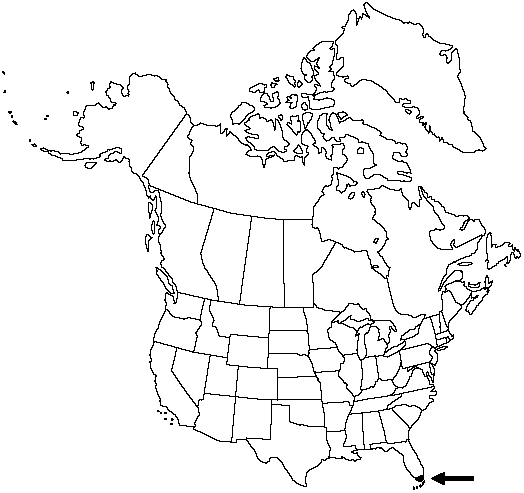Ctenitis sloanei
Amer. Fern J. 59: 66. 1969.
Petiole scales orangish, rarely brown, linear or filiform, 20–40 × 0.4–1.5 mm, densely tangled and woollike. Blade 2–4-pinnate-pinnatifid, glabrous or glandular on both surfaces; glands pale yellow, ca. 0.1 mm, appressed. Basal pinnae 22–50 × 10–23 cm, inequilateral, elongate basiscopically. Ultimate segments 2–4 mm wide; margins ciliate. Veins 3–6 pairs per segment, unbranched or 1-forked. Sori medial to inframedial; indusia present but soon deciduous and therefore appearing absent. 2n = 82.
Habitat: Wooded limestone ledges, hammocks, cypress swamps
Elevation: 0 m
Distribution

Fla., s Mexico, West Indies in Antilles, Trinidad, Central America, South America in Colombia, Ecuador, Peru, and Venezuela.
Discussion
The names Ctenitis ampla (Humboldt & Bonpland ex Willdenow) Ching and Dryopteris ampla (Humboldt & Bonpland ex Willdenow) Kuntze have been misapplied to this taxon. Ctenitis sloanei and C. submarginalis both have numerous scales at the base of the petiole; in C. sloanei, however, the scales form a large, conspicuous, tangled tuft.
Selected References
None.
